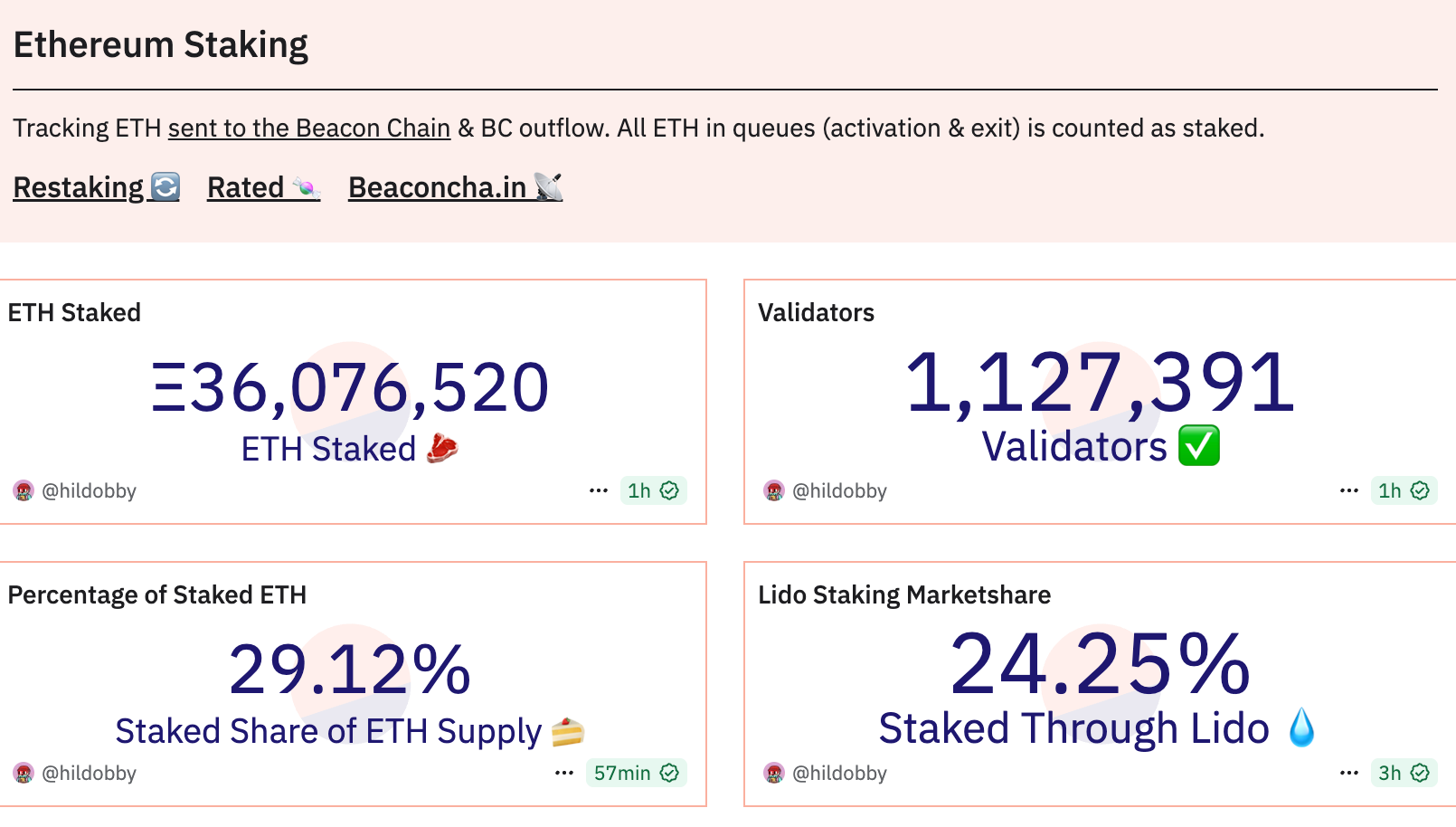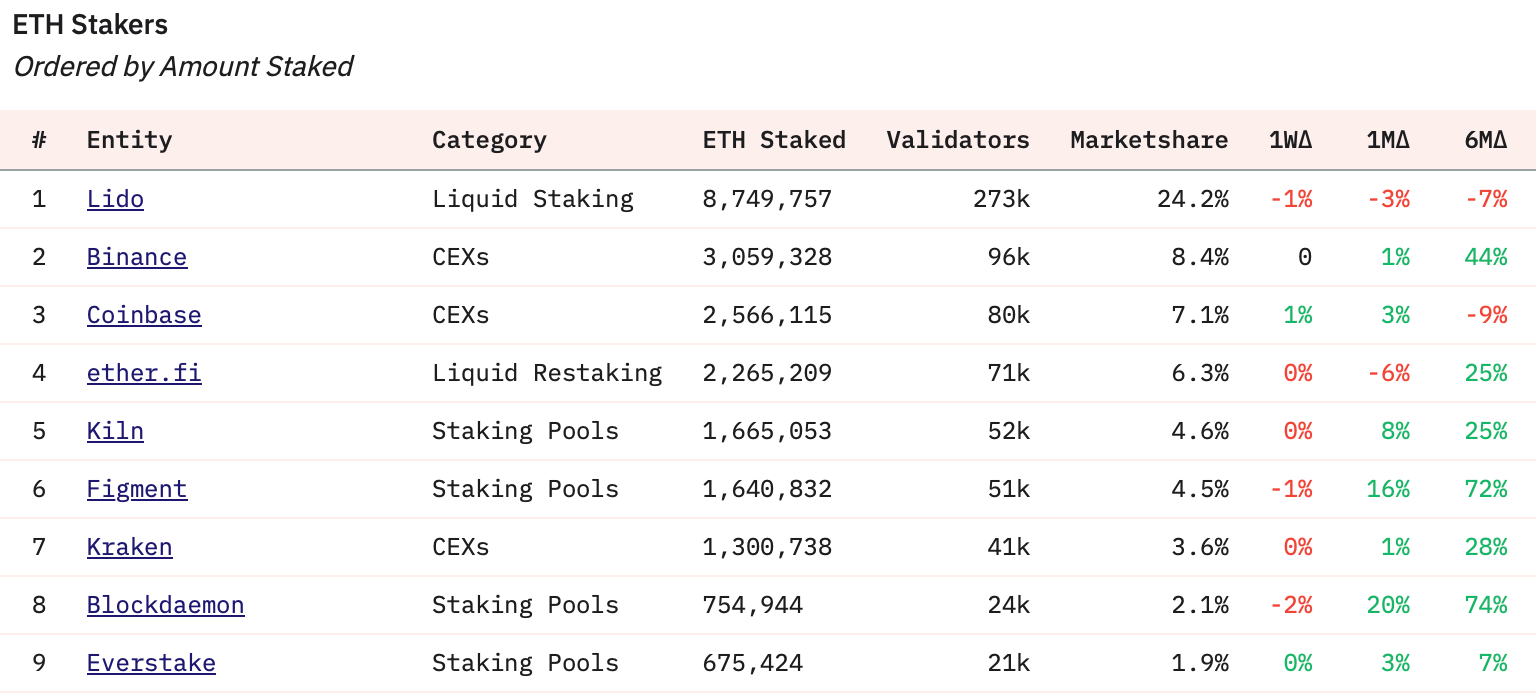Ethereum staking represents a
fundamental shift
in how the network secures operations and distributes rewards. Since Ethereum's transition from proof-of-work (PoW) to proof-of-stake (PoS) in September 2022—an event known as "The Merge"—staking has become
integral to participation
in the world's largest smart contract platform. Rather than relying on energy-intensive mining, Ethereum now uses staked ETH as collateral to validate transactions and create new blocks. This transition has not only reduced Ethereum's energy consumption by approximately 99.9% but has also created new
economic opportunities
for ETH holders to earn yields while contributing to network security. With over $86 billion worth of ETH currently staked and annual yields ranging from 3% to 12% through various strategies, staking has emerged as a cornerstone of Ethereum's ecosystem and a
significant revenue stream
for both retail and institutional participants. This guide explores everything from basic mechanisms to advanced strategies for ETH staking.

ETH Staking Data. Source: Dune
Understanding ETH Staking
What is Staking?
Staking refers to the process of
locking cryptocurrency to participate in maintaining a proof-of-stake blockchain network. In Ethereum's context, staking involves depositing ETH to become a validator—a node responsible for
processing transactions, creating new blocks, and ensuring network security. Validators are required to stake 32 ETH to activate their validation software, though users can stake smaller amounts through pooled services. The network randomly selects validators to propose blocks while others attest to the block's validity. Participants receive
staking rewards in ETH for performing their duties correctly, with penalties applied for malicious behavior or downtime. This system replaces the computational competition of proof-of-work mining with economic stake as the security mechanism.
The Role of Staking in Proof-of-Stake
Within Ethereum's proof-of-stake consensus, staking serves multiple critical functions. First, it provides
economic security for the network—attackers would need to acquire and stake a majority of ETH (potentially billions of dollars worth) to compromise the chain, making attacks economically impractical. Second, staking
incentivizes honest participation through rewards for proper validation and penalties (called "slashing") for malicious actions. Finally, staking creates a
deflationary pressure on ETH supply—as more ETH gets staked, it becomes temporarily illiquid, potentially increasing scarcity while the yield mechanism distributes new ETH to stakeholders approximately at an annual rate of 3-5% under normal conditions.
Ethereum's Upgrade Roadmap
Ethereum's development follows an
ambitious roadmap of interconnected upgrades that enhance functionality, scalability, and security. The Merge (completed September 2022) marked Ethereum's transition to proof-of-stake, reducing energy consumption by 99.9% and setting the stage for subsequent improvements. The next major phase,
The Surge, focuses on scaling through proto-danksharding and rollup improvements, aiming to dramatically increase transaction throughput and reduce costs. Following this,
The Verge will implement Verkle trees to optimize storage and enable stateless clients, while
The Purge will simplify protocol by eliminating historical data and reducing technical debt. Finally,
The Splurge will address miscellaneous functionality and ensure smooth operation of all components.
These upgrades have
significant implications for stakers. Improved scalability attracts more users and applications to Ethereum, potentially increasing transaction fees and validator rewards. Enhanced security features protect staked assets, while technical improvements make running validators more accessible. Notably, Ethereum's
deflationary mechanism (EIP-1559) burns a portion of transaction fees, potentially making ETH a deflationary asset during high-network-activity periods and increasing its value proposition for stakers.
Primary Methods of ETH Staking
Solo Staking
Solo staking involves
running your own validator node by depositing 32 ETH and maintaining the necessary hardware and software. This approach requires technical expertise to set up and maintain an Ethereum execution client, consensus client, and validator client while ensuring near-100% uptime. The
significant advantages include complete control over your keys and rewards (typically 3-5% APY), maximum security through self-custody, and directly contributing to network decentralization. However, solo staking carries substantial responsibilities—validators face
slashing risks (partial loss of staked ETH) for malfeasance or downtime, must handle regular software updates, and require stable internet connection and power. The hardware costs approximately $1,000-$2,000, and technical knowledge is mandatory for troubleshooting.
Staking-as-a-Service Providers
For those with 32 ETH but lacking technical confidence, staking-as-a-service (SaaS) providers offer a
compromise solution. Users still deposit 32 ETH but delegate node operations to professional providers like Allnodes or BloxStaking. The service manages hardware, software, and maintenance for a fee (typically 10-20% of staking rewards). Users retain control of their
withdrawal credentials (ability to unstake) while the provider handles technical operations. This approach reduces technical barriers while maintaining self-custody of funds. However, users must trust the provider's competence and security practices—though the slashing risk remains lower than with solo staking since professionals manage the nodes.
Pooled Staking/Liquid Staking
Pooled staking services have become the
most popular method for those with less than 32 ETH or seeking flexibility. Platforms like Lido and Rocket Pool pool resources from multiple users to activate validators, issuing derivative tokens (stETH or rETH) that represent staked ETH plus rewards. These
liquid staking tokens can be traded, sold, or used in DeFi protocols while continuing to accrue staking rewards. Lido dominates this sector with over $13.9 billion in staked ETH, offering stETH tokens that integrate seamlessly with DeFi protocols like Aave and Uniswap. Rocket Pool offers a more decentralized alternative requiring node operators to stake 16 ETH while accepting the rest from pools.
Table: Comparison of Primary ETH Staking Methods
| Method |
Minimum ETH |
Technical Skill |
Custody |
Potential APY |
Liquidity |
| Solo Staking |
32 ETH |
Advanced |
Self-custody |
3-5% |
Illiquid until withdrawal |
| Staking-as-a-Service |
32 ETH |
Basic |
Self-custody |
2.7-4.5% (after fees) |
Illiquid until withdrawal |
| Pooled/Liquid Staking |
0.01 ETH |
Beginner |
Protocol custody |
3-4.5% (after fees) |
Liquid via derivative tokens |
Leading Staking Platforms and Projects
List of ETH Top Stakers. Source: Dune
Lido Finance
Lido has emerged as the
dominant player in liquid staking, with approximately $13.9 billion in total value locked (TVL) as of August 2025. The protocol allows users to stake any amount of ETH and receive stETH tokens, which automatically accrue staking rewards and can be utilized across various DeFi applications. Lido's
significant advantage is its extensive integration with DeFi ecosystems—stETH serves as collateral on Aave, has deep liquidity on Uniswap and Curve, and functions across multiple Layer 2 networks. However, Lido faces criticism over
centralization concerns, the protocol selects node operators rather than being fully permissionless, and its market dominance (controlling nearly 30% of staked ETH) raises potential systemic risk concerns.
Rocket Pool
Rocket Pool offers a more
decentralized alternative to Lido, emphasizing permissionless node operation and lower concentration risk. The protocol requires node operators to stake 16 ETH (instead of 32) while sourcing the remaining 16 ETH from the staking pool. Rocket Pool issues rETH as its liquid staking token and uses RPL tokens to incentivize node operators and provide an additional security layer. The protocol's
design advantages include stronger decentralization credentials, no whitelisting for node operators, and a system where node operators must stake RPL as additional collateral, aligning their interests with network security. However, Rocket Pool's
growth constraints include requiring more active node operators compared to Lido's more capital-efficient model.
Centralized Exchanges
Major centralized exchanges like
Coinbase and
Binance offer user-friendly staking services with low technical barriers. Users can stake any amount of ETH and receive rewards without managing keys or technical infrastructure. These services are
particularly appealing to beginners seeking simplicity and convenience. However, exchange staking involves significant trade-offs—users surrender control of their assets to the exchange (counterparty risk), typically receive lower yields due to higher fees, and contribute to centralization of Ethereum's validation network. Regulatory uncertainty also surrounds exchange staking services, particularly in the United States where the SEC has targeted certain staking offerings.
Staking Risks and Challenges
Market and Technical Risks
ETH staking involves several
substantial risks that participants must consider.
Market volatilityrepresents a primary concern—if ETH price decreases significantly during the staking period, losses from price depreciation might exceed staking rewards earned.
Slashing penalties pose another risk—validators can lose up to 1 ETH for malicious actions (such as double signing) or smaller amounts for downtime, though penalties for minor infractions are typically modest.
Technical risks include software bugs, connectivity issues, or hardware failures that can lead to reduced rewards or penalties. Additionally,
smart contract vulnerabilities present risks, particularly with liquid staking protocols—as demonstrated by the July 2025 RareStaking exploit where an attacker manipulated a merkle root vulnerability to drain funds.
Regulatory and Network Concerns
Regulatory uncertainty continues to cloud the staking landscape, particularly in the United States. The SEC has targeted certain staking offerings as potential unregistered securities, while proposed legislation like the GENIUS Act could impose additional compliance requirements and potentially reduce retail staking yields by 3-5%.
Network congestion presents another challenge—Ethereum's validator exit queue has swelled to 910,000 ETH ($3.91 billion), creating potential delays for unstaking requests during periods of high demand1.
Centralization risks also merit concern—Lido's significant market share and the concentration of nodes in centralized hosting services create potential points of failure despite Ethereum's decentralized design.
Recent Trends and Developments in ETH Staking (2025)
Institutional Adoption and Yield Innovation
The ETH staking landscape has evolved dramatically throughout 2025, characterized by
accelerating institutional adoption and
innovative yield strategies. Major institutions including BlackRock, Fidelity, and even the U.S. government have entered the staking arena—the latter reportedly staking 65,232 ETH (approximately $281 million) as part of its digital asset management strategy. Traditional corporations like BitMine Immersion Technologies, Bit Digital, and SharpLink Gaming have added ETH to their balance sheets with staking as a revenue component. Simultaneously,
yield optimization strategies have proliferated—liquid staking derivatives like stETH can be restaked through protocols like EigenLayer to earn additional yield, potentially compounding returns to 12% or more through sophisticated strategies.
ETF Integration and Regulatory Developments
The
approval and success of spot Ethereum ETFs in 2025 has significantly impacted staking dynamics. These ETFs have accumulated over 2.2% of total ETH supply, creating substantial buying pressure and reducing circulating supply. Major asset managers including BlackRock and 21Shares have filed for
staking-enabled ETFs that would distribute staking rewards to investors—a development that could further institutional adoption while potentially raising regulatory concerns. Meanwhile, regulatory clarity has gradually emerged—the EU's Markets in Crypto-Assets (MiCA) regulation provides a framework for staking services, while U.S. regulators continue grappling with appropriate classification of staking offerings.
Table: ETH Staking Yield Comparison Across Platforms (August 2025)
| Platform |
Service Type |
Estimated APY |
Minimum Stake |
Liquidity Solution |
| Solo Staking |
Independent validator |
3-5% |
32 ETH |
Illiquid |
| Lido |
Liquid staking |
3-4% |
0.001 ETH |
stETH token |
| Rocket Pool |
Liquid staking |
3.2-4.2% |
0.01 ETH |
rETH token |
| Coinbase |
Exchange staking |
2.5-3.5% |
0.001 ETH |
cbETH token |
| Gate.io |
Exchange staking |
6.06% (with bonuses) |
0.00000001 ETH |
Direct redemption |
Conclusion
Ethereum staking has matured into a
sophisticated ecosystem offering various participation methods suitable for different risk profiles and technical capabilities. From solo staking maximizing decentralization to liquid staking providing flexibility, each approach involves distinct trade-offs between control, convenience, and potential returns. The staking landscape continues evolving rapidly, with
institutional adoption accelerating through ETF products and corporate treasury strategies while
yield innovation creates increasingly sophisticated compounding strategies.
Despite its maturation, staking retains
significant risks—market volatility, technical complexity, regulatory uncertainty, and smart contract vulnerabilities all demand careful consideration. Participants should thoroughly research options, assess their risk tolerance, and consider diversification across different staking methods. For most investors,
liquid staking protocols like Lido and Rocket Pool offer an optimal balance of accessibility, yield, and liquidity, while technically proficient users with substantial ETH holdings might prefer
solo staking to maximize returns and support network decentralization.
As Ethereum continues its upgrade roadmap with The Surge, Verge, Purge, and Splurge, staking will likely become increasingly efficient and accessible. The emergence of
layer 2 staking solutions like Starknet's planned 2025 implementation further expands possibilities. With approximately 30% of ETH supply currently staked and yields remaining competitive compared to traditional fixed income, Ethereum staking represents a compelling opportunity for those willing to navigate its complexities and risks.
Reference:
CoinCatch Team
Disclaimer:
Digital asset prices carry high market risk and price volatility. You should carefully consider your investment experience, financial situation, investment objectives, and risk tolerance. CoinCatch is not responsible for any losses that may occur. This article should not be considered financial advice.



